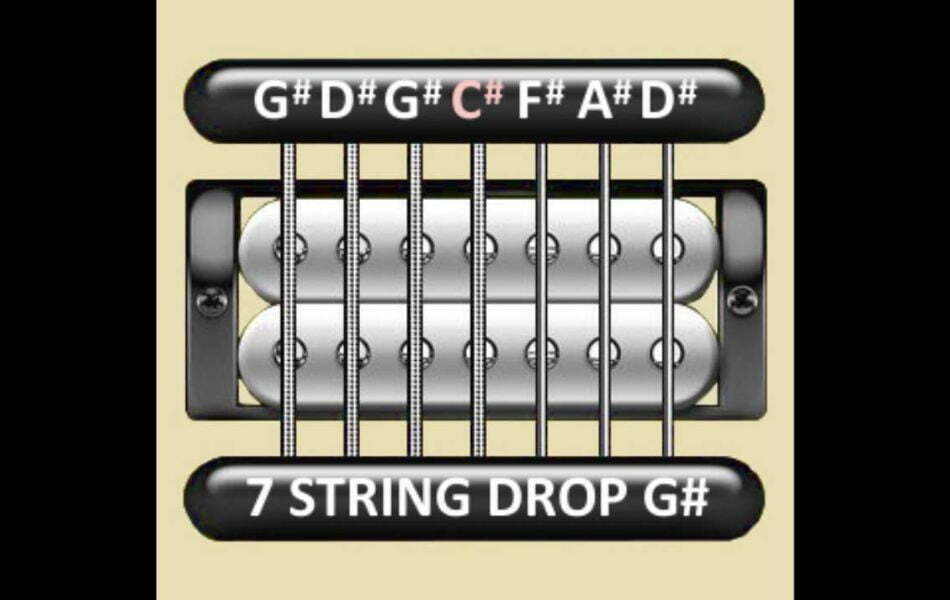Unleashing Depths: The Power Of Drop G# Tuning 7-String
Drop G# tuning 7-string guitar is no longer an unfamiliar concept among guitar enthusiasts. However, for those who are just starting their musical journey, this tuning may still be a novel and intriguing discovery. In this article, we delve deep into the world of drop G# tuning on a 7-string guitar, providing a comprehensive exploration of this alternative tuning style.
What is drop g# tuning 7-string
Drop G# tuning 7-string instrument, such as a 7-string guitar, is a method of adjusting the pitch to create new and creative sounds. In this case, the lowest string (usually the 7th string) of the instrument is tuned down one step from the standard pitch. "Drop" refers to lowering the lowest string by one step, and "G#" indicates the specific lower pitch in this tuning.
The resulting sound in drop G# tuning for a 7-string guitar typically is: G# C# F# B E G# C#. This means the lowest string (7th string) is tuned down from B to G#.
Drop G# tuning for a 7-string guitar is often used to produce robust and deep sounds, and it's commonly favored in genres like heavy metal, hard rock, and other styles that benefit from a heavy and intense sound quality.

How to tune drop G# tuning with Guitar Tunio
There are various tuning apps available for both iOS and Android devices. Moreover, Guitar Tunio is a popular and widely used mobile app designed to assist guitarists and musicians with tuning their instruments accurately.
The app provides a visual representation of each string's pitch, showing you whether the string is in tune or needs adjustment. This is especially helpful for beginners who are learning to recognize pitches by ear. It supports a wide range of alternate tunings, making it versatile for players who prefer different tunings for specific songs or styles.
Following these steps, drop G# tuning 7-string guitar is eassier:
- Start with the lowest string (7th string) and pluck it.
- The app's interface should show you the pitch you're currently playing and whether it's too high (sharp) or too low (flat).
- Adjust the tuning peg of the 7th string until the app indicates that the pitch is in tune with G#.
Characteristics of sound
Drop G# tuning 7-string is commonly used in metal, nu-metal, metalcore, and other heavy rock subgenres. It provides the necessary punch and heaviness for these styles. The lower tuning can create a different feel when playing single-note lines or melodies. It allows for a deeper, more resonant sound that can stand out in the mix.
Transposition and Chord Shapes
One of the notable advantages of G# standard tuning is its compatibility with the chord shapes and patterns used in traditional standard tuning (E A D G B E). This makes it easier to transpose songs originally played in standard tuning to the key of G#.
Transposition Ease
G# standard tuning allows you to use familiar chord shapes and patterns from standard tuning. This means that if you're playing a song that's typically played in standard tuning, you can use the same chord fingerings and positions in G# standard tuning without having to learn new shapes.
Seamless Collaboration
This advantage is particularly valuable when playing with other musicians who are using standard tuning. Instead of having to learn new chord patterns for a different tuning, you can simply play the chords as you normally would in G# standard tuning. This enables smooth and seamless collaboration, making it easier for musicians in different tunings to play together.
Lower Key Sound
When you use the same chord shapes in G# standard tuning, the sound produced will be lower in key. This can add a unique sonic quality to the music and can be advantageous when you want to create a deeper, more resonant atmosphere.

Adapting Without Complexity
Musicians who are already familiar with standard tuning can adapt to G# standard tuning without the complexity of relearning chord shapes. This makes it a convenient tuning choice for those who want to explore lower keys while staying within the comfort of familiar chord patterns.
As you conclude this journey through the realms of musical exploration, you're now equipped with a newfound understanding of the drop G# tuning 7-string guitars. What was once a mystery has unfolded into a realm of sonic innovation and creative potential.








